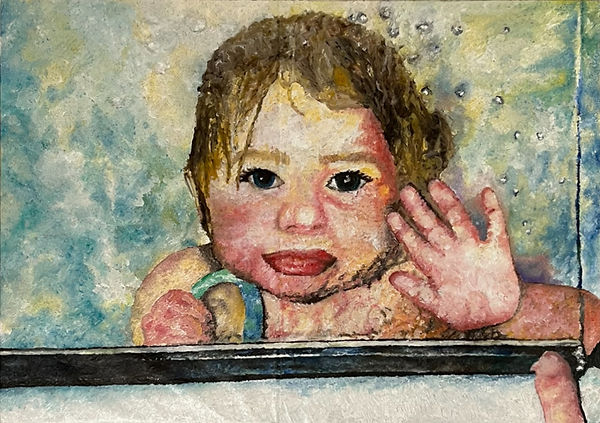ALICE ALDERMAN
ARTIST STATEMENT
My practice explores the emotional complexities of childhood, creating a sense of nostalgia and longing for a time that has passed, which are connected to innocence, purity, and warmth. Through depicting my positive childhood memories, I reflect on the idea of time, evoking both warmth and a sense of distance from a past which cannot be visited. Through engaging with these themes, my work encourages viewers to connect with their memories and experiences of childhood.
l incorporate materials and processes that reference the expressive nature of childhood creativity. Through using mediums and processes such as oil pastels and paper with spontaneous gestured marks my work directly references childhood. The crayon-like texture from oil pastels captures the freedom of playfulness during childhood with mark making allowing me to transform my personal memories into artwork.
Through my practice, I aim to create a space for reflection whereby viewers can confront their childhood memories, whether positive, tragic, or complex. My work reflects how childhood is the foundation of future life to be lived and this unified experience from this common place of youth regardless of our differences we all have this commonality.
WHAT'S THE CONCEPT

BATHTIME FRAMED (close up)
My artwork is a tribute to the fleeting, vivid world of childhood—a time where memories are soft and luminous, yet intensely powerful. Drawing on personal experiences, I explore the spaces, faces, and sensations that define those formative years, aiming to create a universal atmosphere that transports viewers back to a time of innocence, wonder, and unfiltered curiosity. Each piece is crafted with a deep appreciation for the textures and motifs that feel intrinsically linked to childhood. Patterns, like those that might adorn the walls of a child’s bedroom or a favorite piece of clothing, are woven into my work, evoking the comfort of familiarity. My installations extend this exploration further, creating tangible environments that feel both intimate and nostalgic—spaces that invite viewers to engage with the physicality and playfulness of childhood.